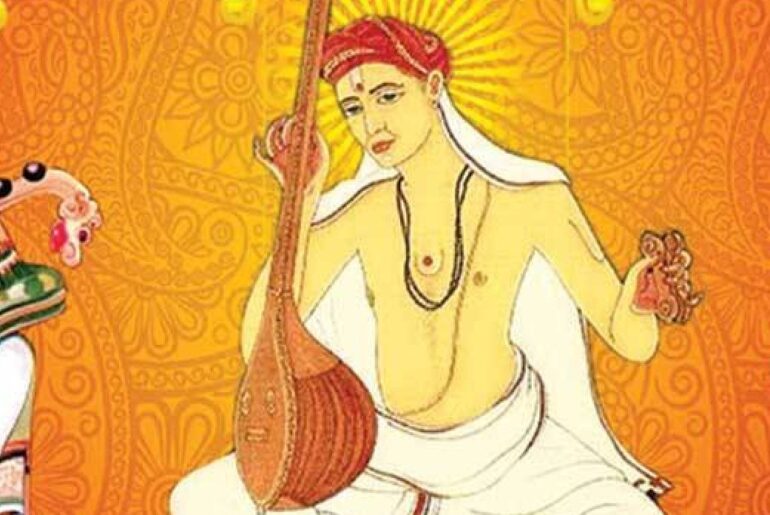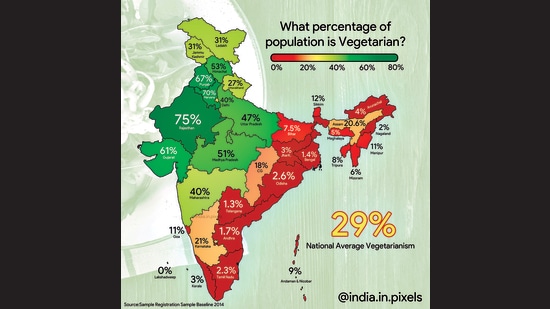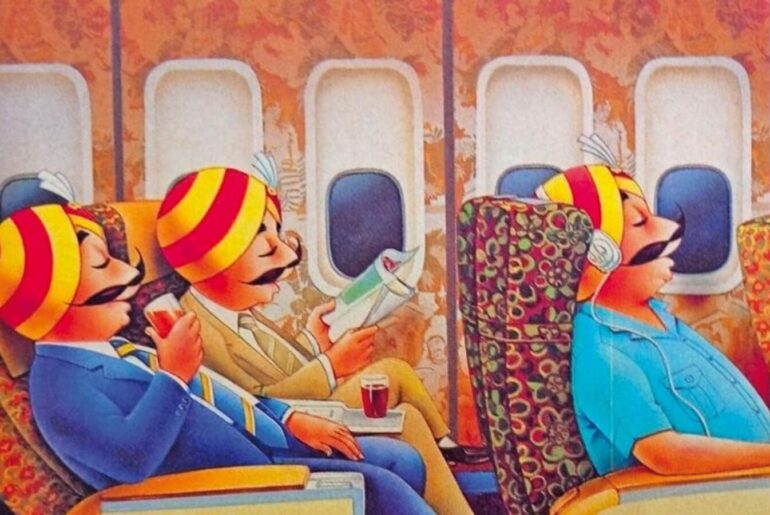To us South Indians, the Punjabi is a gregarious, bombastic, larger than life person. Big, tall, fair skinned, and, often, colorfully turbaned. From Milkha Singh to Bishan Singh Bedi to Khushwant Singh and Manmohan Singh as well as from Mohammed Rafi to Har Gobind Khorana and Ripudaman “Ripi” Singh—my father’s last PhD student, they seem to cover the entire spectrum.
Given my personal interest in history, it was, therefore, not surprising that I had, over multiple trips to bookstores, collected three books on the Punjab Empire—one that stretched from Peshawar in present day Pakistan to Srinagar in Kashmir and on down to Delhi with its capital in Lahore, one that ruled from 1799—1849:
- Chitra Banerjee Diwakaruni’s “The Last Queen”;
- William Dalrymple and Anita Anand’s “Kohinoor”; and
- Navtej Sarna’s “The Exile”.
What was surprising is that Surekha and I, after a long long time, managed to go to a book reading by an author when Chitra Banerjee Divakaruni was in Mountain View, Ca, on June 2nd, 2022. And, what was even more fascinating for me was the multiple perspectives on those incredible and tumultuous 50 years and their aftermath that the three books presented.
In fact, Shashi Tharoor writes about the impact of Britain on India (“… the British decimated the Indian economy over 250 years. In 1700, India was the world’s richest country, accounting for some 27% of global GDP. But in 1947, when India achieved its independence, India had been reduced to one of the world’s poorest countries, with just over 3% of global GDP.” [1], [2]) While I’ll have to read his book, An Era of Darkness: the British Empire in India, sometime to better understand his perspective, what was clear to me was that the Punjab Empire self-destructed. Perhaps, not that differently than many other Indian kings who were caught up in living a good, often risqué lifestyle instead of governing. And/or, ignoring the motivations of the British as well as the unexpected greed and treachery of the Indian himself. (For example, the British East India Company started its ascent in India by promising Mir Jafar, the military commander of Siraj-ud-Daulah, the Nawab of Bengal, the position of the Nawab and 50% of the treasury if he let them win the Battle of Plassey in 1757.)
But, I deviate. I coincidentally read all three wonderfully juxtaposed books over the August 15th weekend, just as India was celebrating its 75th year of independence. Divakaruni and Sarna bookended the story by covering the final years of Ranjit’s life and the obviously depressing life of Duleep Singh, Ranjit’s youngest son and eventual successor with Dalrymple providing a British (Anglo-Indian?) view of the goings on using the reputedly amazing Kohinoor diamond as a parallel and symbolic storyline.
The broad storyline: Ranjit Singh becomes the Maharaja of Punjab at age 21 (in about 1799), after winning over the many Sikh misls who had reigned over the many parts of the region previously, and dies in 1839 aged ~58. The massive empire he leaves behind quickly falls apart in just 10 years, with his sons being killed and killing each other until, eventually, the 5 year old Duleep Singh is installed as the Maharaja with Ranjit’s last (and, presumably, favorite) wife Jindan Kaur as the Regent. Only to have the British find a less-than-honorable way to grab the empire, isolate Duleep (from Punjab, India, and his mother), have him trade his empire for a measly £40,000/year pension (and, then, renege on even that so Duleep died a pauper in Paris!) The symbolism of the Kohinoor diamond is that it physically moved from the forearm of Ranjit Singh to the crown of Queen Victoria as the British conquered and then decimated Punjab (and India).
I won’t say more, so you can read about and enjoy the many intricate plots, the revisioned perspective of the victor and the newer writings from letters and research of the conquered. From the politics of the King’s bed and zamana (the harem) to the agony of the conquered.
Several thoughts crossed my mind as I read these books:
- How stupid most rulers of large parts of India were, how petty and short sighted their thinking, how utterly devoid of self-confidence
- How devious and despotic the British were—whether representing the East India Company with the fervor of a conqueror-entrepreneur or the bureaucratic-ruler representing the British Crown
- How big a role technology and sociology play in history. Clearly, the fire power of the European powers, which grew starting circa 1700 [3],[4], played a significant role in winning wars with significantly smaller armies. The number of times the Indian sides were bribed into losing are too many and too depressing to list. Starts, as I said, at the Battle of Plassey in 1757
- How depressing it must have been for the defeated rulers—giving up their crowns, often surrendering their children as security/collateral, being constantly and deliberately insulted (check out the story of Princess “Victoria” Gowramma of Coorg, if curious)
- How surprising it was that the French, Spanish and Portuguese didn’t put up a bigger and longer fight for the prize that India was. How totally powerful the British became
- How Prince Albert had the Kohinoor recut (and dramatically reduced in size) to increase its brilliance
- How some of the more decent British folks running lost to the more rapacious ones, how over time the sense of entitlement won over the sense of guilt that this was all stolen maal (even Queen Victoria apparently realized that the Kohinoor was ill-gotten wealth and didn’t have it set in the crown until her folks engineered a situation to have Duleep Singh “gift it” to her)
- And, finally, how often 3rd rate losers and uneducated Britishers with no future in Britain were shocked and thrilled to be masters in India, living lives better than even the Queen herself! And, how many of them turned out to be vicious as power got to their heads.
While the three authors have very different writing styles, interpret and write about history very differently, all of them have done a wonderful job of their research. They bring the scenes to life, doing a commendable job of transporting you across space and time into 19th century Lahore, London, Cairo, and Paris. Chitra tends to interpret more so than Sarna, who quotes from period letters and the like.
I’d start with Divakaruni, move on to Dalrymple/Anand, and end with Sarna. While not the happiest way to end, it does represent the important sense of loss of the many conquered in India.
I found myself crying with the protagonists at times, cursing the British (from the Resident to the Governor General to the Queen herself) at others, and generally cheering on the braver among the underdogs who were fighting for their homelands. I’d be lying if I didn’t say that I rejoiced in celebrating 75 years of India’s regaining its independence, warts and all—even spent some time on YouTube listening to the many modern and varying renderings of Vande Maataram (here, here, here, here). At least, now, the people and their leaders have one overriding goal (doing what is right by India and India alone) and themselves to blame for any execution challenges.
Finally, I’m out looking for a book on Maharaja Ranjit Singh. I see several on Amazon and Flipkart. Any recommendations?
Saturday, September 3, 2022, Shelter Cove, Ca.
——————————
- Firearms and the decline of violence in Europe: 1200—2010, Carlisle Moody, College of William and Mary, working paper #158, Jan. 2015
- Why was it Europeans who conquered the world?, Philip Hoffman, The Journal of Economic History, Vol. 72, No. 3, pp. 601-633, Sep. 2012
[1] Just announced today, 75 years later, is the fact that India is the 5th largest economy in the world with 3.28% of global GDP. Ironically, by displacing the UK which has been dropping in GDP over the last 75 years (more here).
[2] United Kingdom’s share of the world economy rose from 2.9% in 1700 up to 9% in 1870. The British East India Company, following their conquest of Bengal in 1757, had forced open the large Indian market to British goods, which could be sold in India without tariffs or duties, compared to local Indian producers who were heavily taxed, while in Britain protectionist policies such as bans and high tariffs were implemented to restrict Indian textiles from being sold there, whereas raw cotton was imported from India without tariffs to British factories which manufactured textiles from Indian cotton and sold them back to the Indian market. (Wikipedia entry)
[3] Firearms and the decline of violence in Europe: 1200—2010, Carlisle Moody, College of William and Mary, working paper #158, Jan. 2015
[4] Why was it Europeans who conquered the world?, Philip Hoffman, The Journal of Economic History, Vol. 72, No. 3, pp. 601-633, Sep. 2012










